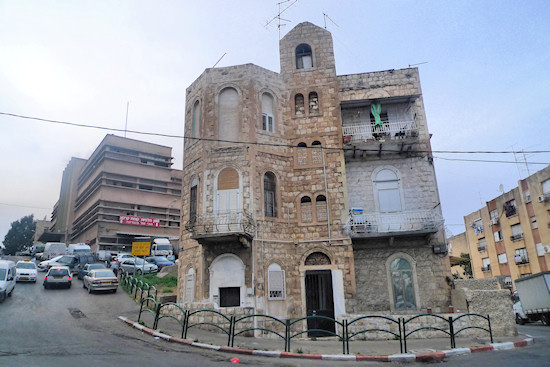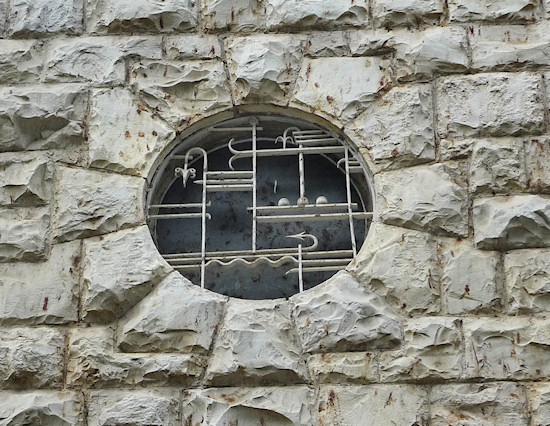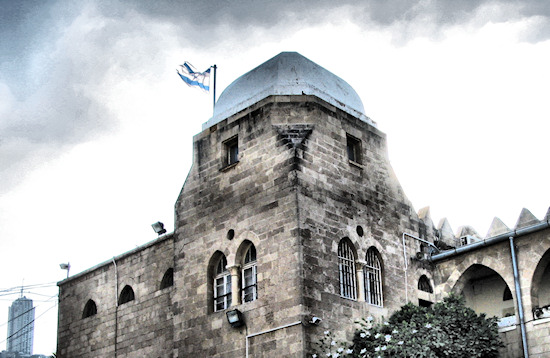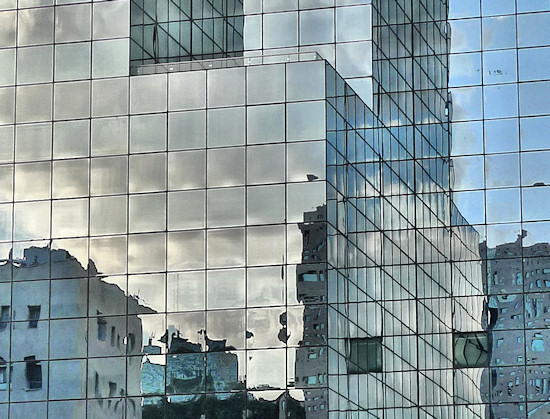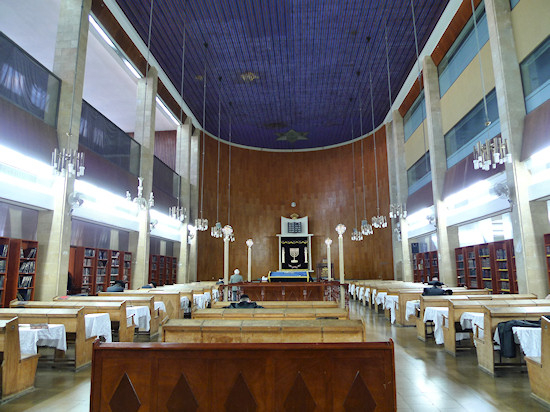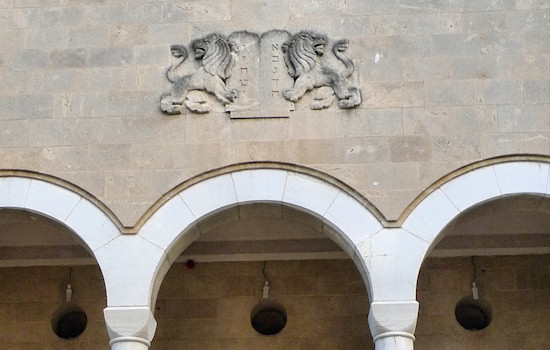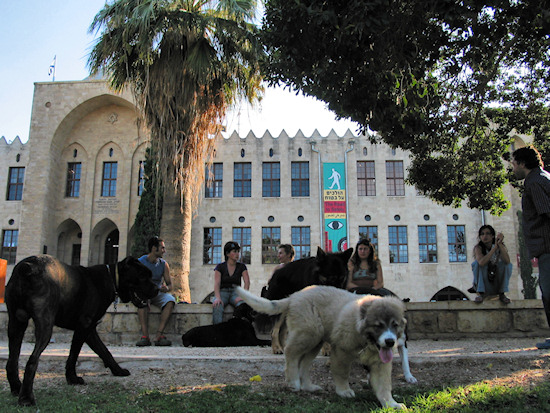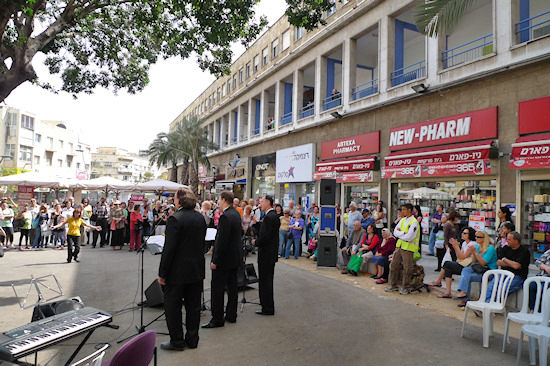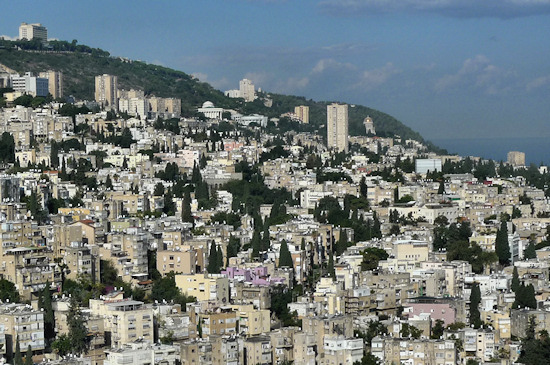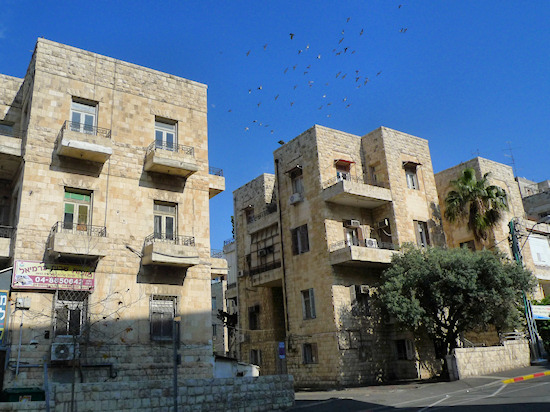Section 2: Hadar Ha'Carmel - The Start of Jewish Haifa | 3.3 Km
Starting point: Hassan Shukri St. – Memorial Garden | 65m above sea level
Ending point: Corner of Masada St. and Emek HaZeitim Steps | 102m above sea level
Established in 1920, Hadar Hacarmel was Haifa’s first Jewish neighborhood. It was designed by the architect Richard Kaufmann as a “garden city” and modeled on Tel Aviv, but in Hadar Hacarmel the slope of the Carmel Mountain ridge lent the neighborhood a distinctive, scenic aspect. There is a fascinating mix of different architectural styles; between the 1930s and the 1970s, the neighborhood was Haifa’s commercial and cultural center.
This section of the trail starts opposite the Memorial Garden next to Haifa Municipality’s impressive building on Hassan Shukri St. Hassan Shukri served two non-consecutive terms as Haifa’s mayor. Note the welcoming façade of the municipality building, designed by Benjamin Chaikin. Continue past the old law courts and on to “Solel Boneh” Square, opposite which is the Solel Boneh building used by the construction company of the same name. Solel Boneh was established by the Histadrut (Israel's organization of trade unions) in its heyday and was responsible for numerous construction projects in Haifa and throughout Israel. Today, the view of the square is dominated by the questionable outlook of the Nevi’im Tower with its black windows.
Walk up Ha’nevi’im St. Note the typical Arab-style architecture as reflected in the buildings of this neighborhood that adjoins Wadi Nisnas (detailed in Section 20).
Turn into Hahalutz St., and then into Bervald St. to arrive at Herzl Street. This area has an interesting mix of Arab-style and International-style buildings that is typical of Hadar Hacarmel with its stone walls and embellished entrances and balconies. Those interested in architecture will enjoy taking time to wander through this area. Opposite is “Beit Hakranot”, an important old office block. The intersection of Herzl St. and Balfour St., and the adjoining "Beit Hashaon" (House of the Clock), was once the bustling center of Hadar.
Walk a little up Balfour St., one of the steepest streets in Haifa. Turn left into the Nordau pedestrian precinct. Stroll under the trees and among the deserted stores and imagine Haifa’s high society sitting here in the lively cafes up until the 1960s.
In Haim Weizmann Alley turn left to arrive at Herzl Street, Hadar Hacarmel’s main commercial thoroughfare. Turn right. There are some interesting buildings where the street branches off right into Arlozorov St., whose rounded facades match the curves of the streets.
On the left is an open area between the Gallery Hotel and Haifa Tower. Cross the open area and descend the steps towards Hahalutz St., cross the road again and, walking among the stalls, enter the Talpiot Market quarter, the tastiest shopping center in Haifa, arriving at the intersection of Lunz St. and Sirkin St., the bustling heart of the market. Here, stalls and cars intermingle, but there is no mistaking the taste – high-quality produce and something to suit every palate bring residents here from all over Haifa. The market’s crowning glory is its monumental building whose façade dominates Sirkin St. The building was opened in 1940 and at that time all the market stalls were concentrated inside. It was designed by the architect Moshe Gerstel in the International style and is one of the most impressive buildings in Haifa. It is worthwhile entering the ground floor to get an idea of the inner space filled with natural light from the glass brick roof. Today, trading is limited to the basement of the building that awaits better days. This area is located on the seam between Hadar Hacarmel and Wadi Salib and, not surprisingly, here too is a proliferation of architectural styles ranging from the Arab style to the International style with an interesting mix between them. Those interested in architecture can spend time in the adjoining streets.
Continue down Sirkin St. towards Sokolov St. and walk up. Cross Hahalutz St. and then Herzl St. as far as Rav Herzog St. and turn left. On the left is Haifa’s Great Synagogue that was built in the 1940s. It is worth entering the courtyard to marvel at the decorative reliefs on the façade and enter the prayer hall with its wooden ceiling. Note also the façade of the impressive building that looks towards Herzl St. The area to the south-east of this point is characterized by an ultra-orthodox Jewish population.
Return to Rav Herzog St., ascend Hagilead Steps to Michal St. and turn right to arrive at Arlozorov St. At the top of the street is the stone-built house where the artist Hermann Struck lived. From Michal St. cross Arlozorov St. and enter Frishman Alley, which leads to Gan Binyamin.
Constructed in 1923 and named after Baron Binyamin Rothschild, who visited Haifa in 1925, it is considered to be Israel’s first public garden. The garden is landscaped with olive trees and its upper level is dominated by Haifa Theatre and the public library.
Continue straight on through the garden to Jerusalem St., observing the impressive buildings along the way, which leads back to Balfour St..
Cross the street into the area opposite the Madatech Museum that is housed in one of the buildings most closely identified with Haifa. In 1912 the cornerstone of the “Technikum” – the first Jewish academic institution of technology, known today as the Technion – was laid. The building was designed by the architect Alexander Bervald, who also designed the Reali School located below (the school is visible on the right when walking the length of the building).
Continue to Shmaryahu Levin St. that merges into Ben Shemen St. On the corner is "Beit Ittin", built in 1920. It was once a hospital and is constructed in the magnificent eclectic style. Continue straight ahead into Ben Shemen St., which becomes steps that descend among the buildings.
Turn left into Emek HaZeitim St. and continue up. Pass the turning to Ben Yehuda St. and continue straight ahead where Emek HaZeitim St. becomes a shady garden among the buildings. To continue on to the next section that starts in Masada St., ascend the steps located on the other side of the garden.
English translation by Roberta Neiger sponsored by the social hub for community & housing, Faculty of Architecture and Town Planning, The Technion
